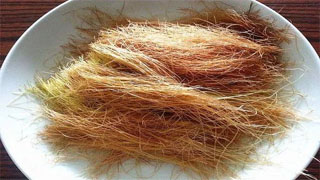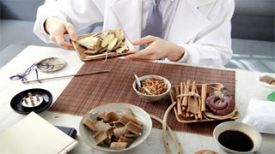The causes of synovitis
1. As people age, their bones will not be as good as before. Bone loss gradually occurs, and joints are deteriorating. Over time, people will develop various bone diseases, including synovitis.
2. Congenital malnutrition can lead to inadequate bone development, making it easy for bones to be damaged. Even minor injuries and pain can result in bone problems, leading to the onset of this disease.
3. Not paying attention to keeping warm can cause cold air to enter the body and fail to escape, leading to vasoconstriction, muscle spasms, and non circulation of blood vessels, which can then trigger synovitis.
The hazards of synovitis:
1. Walking disorders
Patients may lose balance when walking due to the production of joint fluid, often unable to step up and down stairs, and may experience pain when exerting force.
2. Recurrent attacks
If synovitis patients are not treated in a timely manner, their condition will recur and become more severe each time, ultimately leading to complete loss of labor.
3. Causing paralysis
Severe synovitis patients may experience muscle atrophy, joint stiffness, and inability to move normally over time, ultimately leading to paralysis in bed.
Another obvious symptom is joint swelling, which is caused by joint effusion and accompanied by pain. Excessive fluid accumulation can compress nerves and cause numbness in the legs.
Two methods for regulating synovitis:
1. Black bean Congee
After washing the black beans and glutinous rice, pour them into a pot and add an appropriate amount of water. Bring to a boil over high heat, then reduce the heat and simmer slowly until the black beans are cooked and the glutinous rice is thick. Season with an appropriate amount of brown sugar. Black beans enter the kidney and have the function of tonifying the kidney. Boil black beans and japonica rice together into Congee and eat it. It has the function of promoting blood circulation and detumescence. It is suitable for patients with synovitis.
When knee pain occurs, if combined with some traditional Chinese medicine for external application, it can help correct the body, eliminate swelling, and dispel wind and cold.

2. Method of applying corn silk and medical cotton yarn externally
Prepare 40g corn sprouts, 20g dipstick, 30g fresh ginger slices, 15g ground beetle worms, a bottle of high quality Baijiu, 40g loofah, and several pieces of clean medical cotton yarn. Then put all the above materials into a clean container and soak for about 5 days before they can be used.Specific usage method: Take out the medical cotton yarn from the container, retain an appropriate amount of medicine, heat it in the microwave, and then apply it to the knee. After the temperature drops, heat it again. Use it once a day, and then use it before putting the medical cotton yarn into the container.
In addition, traditional Chinese medicine believes that corn silk has a sweet and mild taste, enters the liver, kidney, and bladder meridians, and has the functions of diuresis, swelling reduction, liver calming, and gallbladder promoting. It is mainly used to treat acute and chronic nephritis, edema, acute cholecystitis, bile duct stones, and hypertension. Modern pharmacological research has shown that corn silk contains a large amount of potassium nitrate, vitamin K, sitosterol, stigmasterol, and a volatile alkaloid. It has diuretic, antihypertensive, hypoglycemic, hemostatic, and cholestatic effects.
Kind reminder: Everyone's physical condition is different. The formulas provided in the article should be adjusted according to the situation of the enthusiast. It is recommended to seek guidance from a professional doctor.


